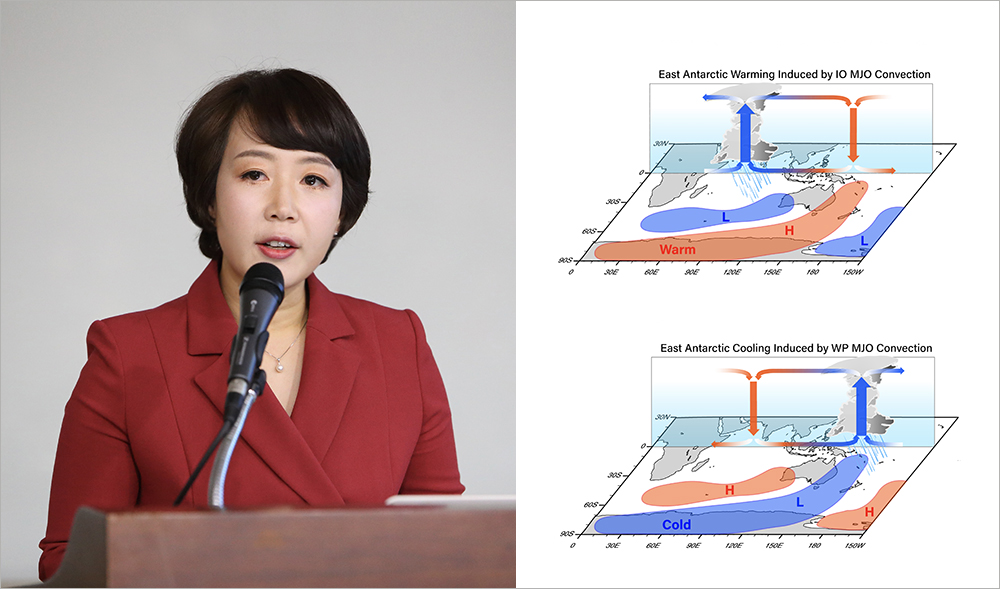
East Antarctic cooling induced by decadal changes in Madden-Julian Oscillation during austral summer

While West Antarctica has experienced the most significant warming in the world, a profound cooling trend in austral summer was observed over East Antarctica(30°W–150°E, 70°–90°S) from 1979 to 2014. Previous studies attributed the Antarctic temperature changes to high-latitude atmospheric dynamics, stratospheric ozone change, and tropical sea surface temperature anomalies. Here, we show that up to 20%–40% of the observed summer cooling trend in East Antarctica was forced by decadal changes of the Madden-Julian Oscillation (MJO). Both observational analysis and climate model experiments indicate that the decadal changes in the MJO, characterized by less (more) atmospheric deep convection in the Indian Ocean (western Pacific) during the recent two decades, led to the net cooling trend over East Antarctica through modifying atmospheric circulations linked to poleward-propagating Rossby wave trains. This study highlights that changes in intraseasonal tropical climate patterns may result in important climate change over Antarctica.
This paper was published in Science Advances by Pang-Chi Hsu, Zhen Fu, Hiroyuki Murakami, June-Yi Lee, Changhyun Yoo, Nathaniel C. Johnson, Chueh-Hsin Chang, Yu Liu. June-Yi Lee who is corresponding author of this paper is professor of Pusan National University.
* https://advances.sciencemag.org/content/7/26/eabf9903
* Fig.) Changes in East Antarctic temperature due to MJO rainfall clusters.
(Up) East Antarctic warming associated with an anomalous high pressure (H) excited by the MJO rainfall events in the Indian Ocean. (Down)
East Antarctic cooling associated with an anomalous low pressure (L) caused by the MJO rainfall events in the western tropical Pacific.
The blue (red) line indicates anomalous atmospheric low (high) pressure at sea level. (Image Credit: Zhen Fu)
(2021.7.8.)

 897이준이교수-영문.jpg
(325KB)
897이준이교수-영문.jpg
(325KB)